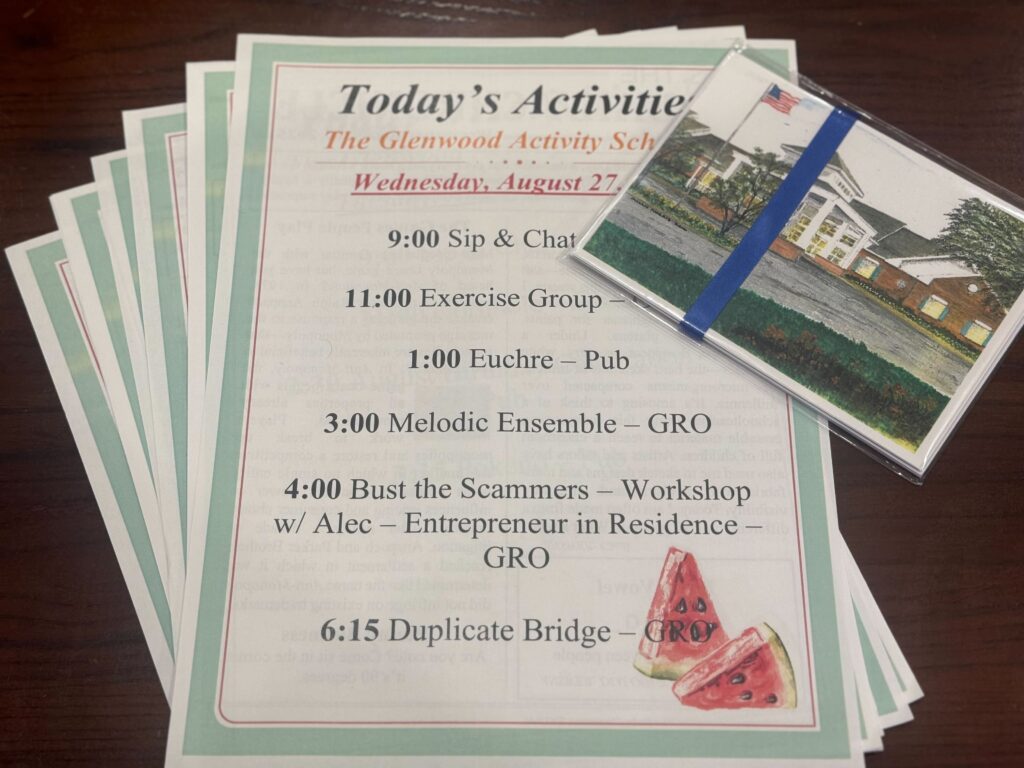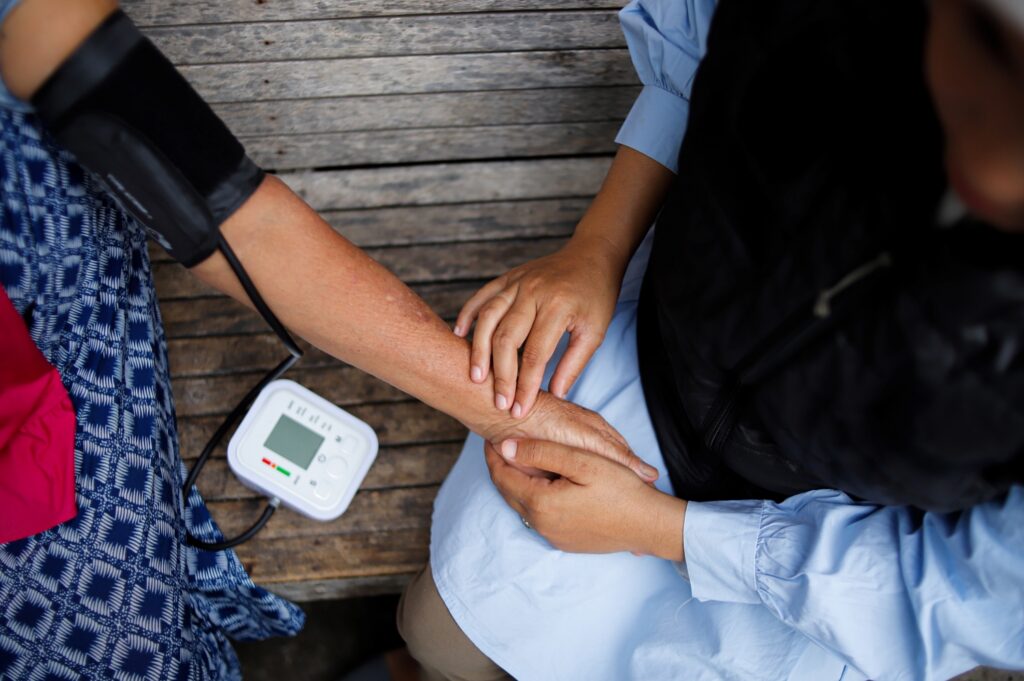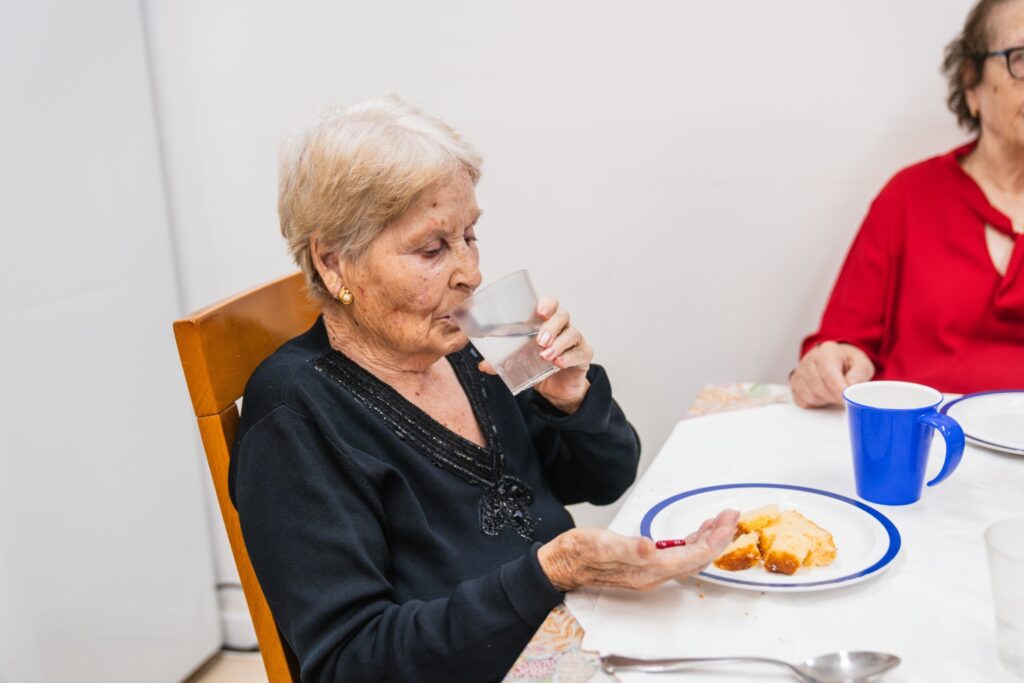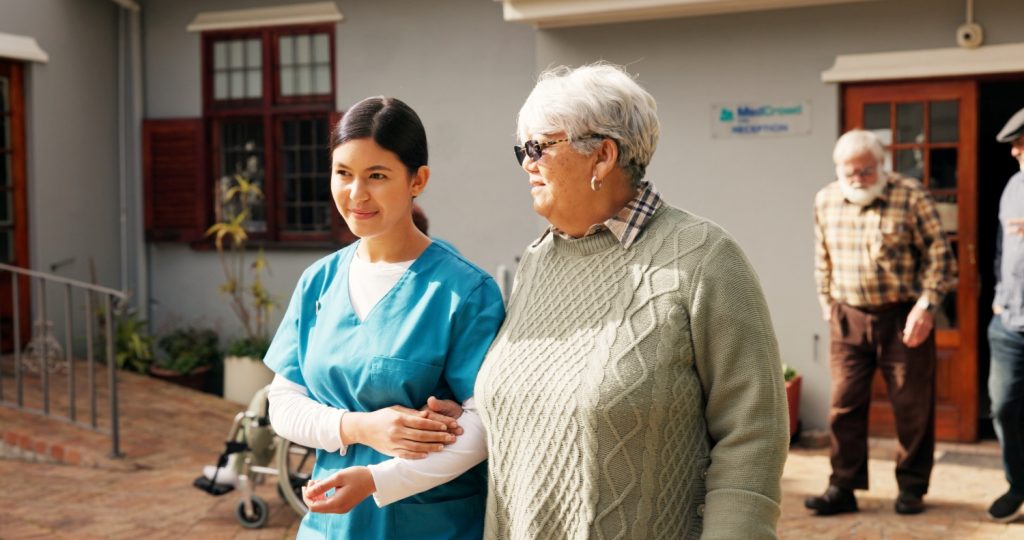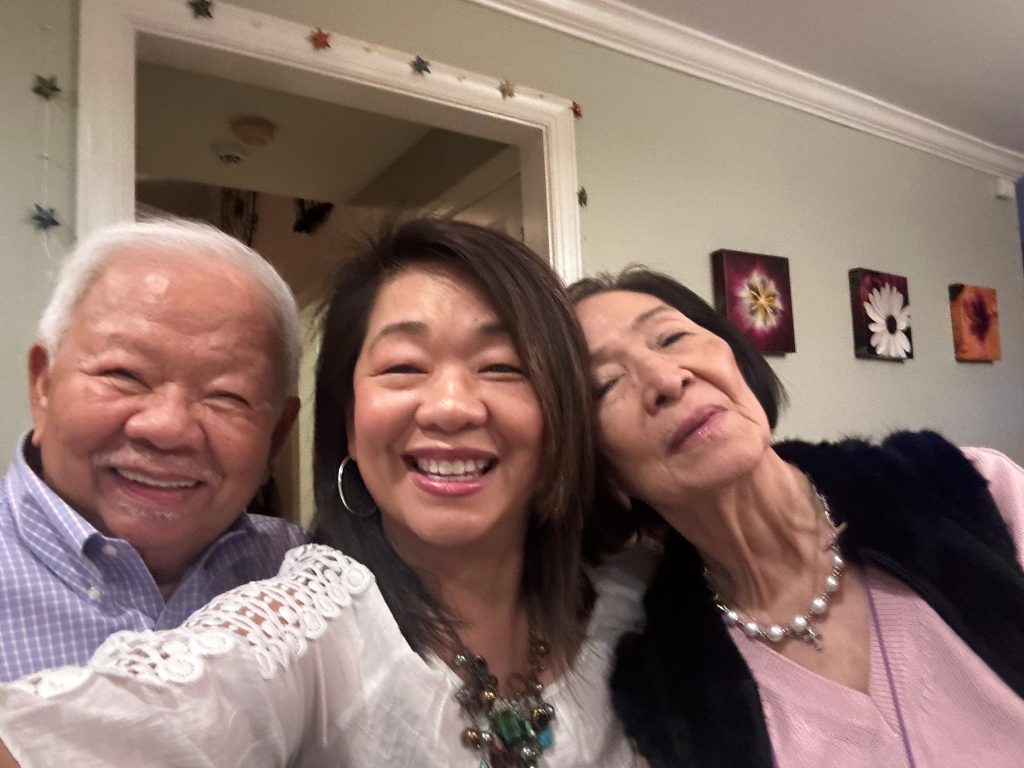Abstract:
This article examines the implications of prioritizing diversity among grandparent caregivers as a lens through which they can be better understood, with special attention to Black, Indigenous, and Persons of Color (BIPOC). Over the past few decades, the focus has been on Blacks and Hispanics/Latinos, with some work on Indigenous grandparent caregivers (Native American, Hawaiian), and Asian Americans, and much of this effort reflects between-group comparisons from secondary datasets that precluded an emphasis on BIPOC grandparents raising grandchildren. We need qualitative, small sample-oriented work, based on one-on-one interviews and focus groups to understand the daily lived experiences of BIPOC grandparents raising grandchildren. Importantly, this will contribute to a greater depth of understanding of such persons, focusing on individuals’ needs, feelings, behaviors, and values regarding raising a grandchild.
Key Words:
BIPOC grandparents, grandparent caregivers, BIPOC grandparents, grandchildren
Over the past decade, interest in the lives of grandparents raising grandchildren has increased dramatically among practitioners and researchers. It has been nearly 50 years since the appearance of Meredith Minkler and her colleagues’ classic work on African American grandparent caregivers raising their grandchildren amid the crack cocaine epidemic, as well as their descriptive documentation of diversity among grandparent caregivers, i.e., grandparents who are American Indian, Alaska Native, Mexican American, Central American, and African American.
Building upon Minkler’s work, the literature from past decades has provided us with vast insight into topics including the health consequences and emotional impact of raising a grandchild, the efficacy of interventions with grandparent caregivers, access and barriers to needed services, and the presence and use of personal and interpersonal resources. That race/ethnicity, in concert with other parameters—age, gender, geographic location (rural versus urban residence)—collectively differentiate grandparent caregivers has been recognized for several decades (see, e.g., Kropf & Kolomer, 2004).
Moreover, it is well-recognized that grandparents who are Black, Indigenous, or Hispanic/Latino are disadvantaged in many respects. These grandparents tend to have lower incomes, be in poorer relative health, and be less educated (see Montoro-Rodriguez & Ramsey, 2019). This differential vulnerability underscores the importance of access to health, economic, and medical service supports for BIPOC grandparents and/or their grandchildren; affordable healthcare (Medicaid, CHIP), economic supports and resources (public assistance programs, Temporary Assistance for Needy Families [TANF]); affordable housing (Section 8 Family Unification Program, Fair Housing Act); mental health-related services (Hayslip & Maiden, 2023); and legal assistance (see Cox, 2019).
Such support may be especially difficult to access for informal grandparent caregivers—those who have not legally adopted the child. (Adoption may be viewed negatively by Black grandparents; see Kropf & Kolomer, 2004.) Informal grandparent caregivers lack legal custody or guardianship and face difficulty in making legal or medical decisions for the child and in enrolling the child in school. These grandparents could especially benefit from culturally competent Kinship Navigators to assist them in accessing needed services and supports (Cox, 2019). This vulnerability of BIPOC grandparents underscores the importance of understanding such persons in light of the unique challenges they face in raising a grandchild, as well as in terms of their unique needs, feelings, attitudes, and strengths.
‘Future research on BIPOC grandfamilies should encompass a continuum of breadth and depth in scope.’
Despite this awareness, work on diversity among grandparents raising their grandchildren has lagged behind that on grandparent caregiving more generally, especially as it relates to the interaction of race/ethnicity and caregiving as well as variability between and within groups of grandparents of color, Indigenous grandparents, and grandparents who are of African or Caribbean descent.
This relative inattention to BIPOC grandparent caregivers is evidenced by the comparatively limited number of published studies focusing on non-Hispanic Black grandparent caregivers, wherein most of such work has been conducted by Deborah Whitley and her colleagues at Georgia State University (Whitley et al., 2016).
While still relatively rare, sporadic work, much of which is qualitative, focusing on BIPOC grandparents has appeared recently, including work on grandparent caregivers who are Hispanic/Latino (Burnette, 2009; Mendoza et al., 2018; Whitley & Fuller-Thomson, 2018), Hawaiian (Yancura, 2010, 2013), Asian American (Ihara et al., 2012; Phua & Kaufman, 2008; Yancura, 2013), Alaska Native (Lewis et al., 2018), Pacific Islander (Yancura, 2010), and Native American/First Nations Canadian (Byers et al., 2017; Dennis & Brewer, 2017; Fuller-Thomson, 2005; Mignon & Holmes, 2013).
Thus, while interest in BIPOC grandparent caregivers has begun to grow, important work that has implications for practitioners, policymakers, and researchers has yet to be done. While comparisons across subgroups of grandparents have been made, more often than not they are drawn from pre-established secondary datasets whose primary purpose was not to study BIPOC grandparents, and often reflect only Black, non-Hispanic White, and Hispanic/Latino persons raising their grandchildren. Even at that, in most comparative studies, BIPOC grandparents are underrepresented.
I feel this severely restricts the quality of our knowledge about such caregivers. Clearly, more work is necessary to paint a comprehensive picture of whether and how BIPOC grandparents differ with respect to one another (and from non-BIPOC grandparents) as well as how and why such persons vary from one another within groups. What do BIPOC grandparents share in common with other grandparent caregivers? What differentiates them and other such persons? To what extent do BIPOC grandparents differ among themselves? Are they homogeneous? What factors explain such variability?
I would suggest that future research on BIPOC grandfamilies should encompass a continuum of breadth and depth in scope. We know relatively little about the day-to-day interactions between such grandparents and their grandchildren and how such interactions are shaped by each dyad’s relationships with, for example, non-caregiving grandparent peers, other family members, friends, neighbors, co-workers, or healthcare professionals. What is the unique influence that being a BIPOC grandparent plays in shaping such interactions?
Thus, while between-group comparisons can provide needed breadth, I argue that our BIPOC knowledge base needs greater depth, which can be achieved via focus group-based work, which could illuminate individuals’ needs, concerns, and feelings. Emphasizing such depth thus enables us to understand diversity from the inside out, in contrast to acquiring such knowledge solely from the outside in, where inferences about depth cannot be made based upon survey/questionnaire data, especially if such data are secondary in nature.
‘This issue of Generations helps mitigate this lack of attention to the lives of BIPOC grandparent caregivers, as well as addressing the need for greater depth in the study of the daily lives of such persons.’
For example, while comparative survey data might indicate that Black grandmothers are more resilient than are White grandmothers, it remains to be understood what life course/experiential factors are important in understanding the origins of such resilience, how those factors impact everyday life, how such resilience is manifested in the decisions Black grandmothers make about raising a grandchild, as well as how Black grandparent caregivers’ resilience impacts their efforts at overcoming barriers to getting services and help from others.
Likewise, we need more work reflecting the lived experiences of such persons that emphasizes the rewards, strengths, and challenges of raising a grandchild from within each person’s cultural experiential perspective. What everyday challenges do BIPOC grandparents face? What strengths and resources do they bring when coping with such challenges? What barriers have they encountered to help and support from those who provide services? How have they overcome these barriers (e.g., microaggressive interactions with others, age and/or racial discrimination)? How much social support from others do they receive? How do they cope with stigma and isolation from others? To what extent are constructs relevant to how BIPOC grandfamilies cope uniquely reflected in the everyday experiences of BIPOC grandparents— familism, reciprocity, acculturation, intergenerational solidarity/transmission of culturally based values, mutuality, spirituality—versus other grandparent caregivers?
Fortunately, this issue of Generations helps mitigate this lack of attention to the lives of BIPOC grandparent caregivers, as well as addressing the need for greater depth in the study of the daily lives of such persons. Articles by Pittman (Black grandmothers supporting their grandchildren’s cognitive and social-emotional development), Accius (autobiographical account of the strengths of his Black grandmother), Simpson (African American grandmother caregivers’ coping in the face of adversity), Mendoza (Latino grandmothers as caregivers), and Peterson (case study of an African-American grandmother’s experience as a compound caregiver) all do an excellent job in speaking to the worth of providing in-depth qualitative portrayals of the culturally bound lived experience of raising a grandchild.
Additionally, articles by Cox (empowerment training), Crewe (poverty and grandparent caregiving), Whitley (family dynamics among grandfamilies), Smith (policy and grandparent caregiving), and Miller and colleagues (culturally sensitive kinship navigator programs) provide rich and sensitively presented insights into a variety of heretofore underappreciated and understudied contextual aspects of BIPOC grandparent caregiving. Collectively, these articles clearly enrich our understanding of and insight into the experience of raising a grandchild for BIPOC grandparents.
This emphasis on the call for greater depth in the study of BIPOC grandfamilies’ parallels that of Rachel Dunifon, who several years ago argued for the need to better understand grandfamilies’ everyday lives. Likewise, the frustrations and successes in getting adequate housing, medical, social, or legal service are likely to impact BIPOC grandparent self-efficacy, grandparent-grandchild relationships, and interactions with others. Understanding such issues has important implications for policy, especially as it relates to issues of equal access and discrimination.
Reflecting this microsystemic perspective on the dynamics of BIPOC grandfamilies, I advocate taking a family systems approach that also embraces the family lifecycle as well as diversity across multiple parameters (e.g., age, gender, sexual orientation, race/ethnicity, rural-urban residence) in the context of the ecology of Uri Bronfenbrenner’s microsystem. This focus is consistent with an emphasis on the lived experiences of BIPOC grandparent caregivers and would have important implications for the treatment of dysfunctional systemic dynamics in such grandfamilies, to the extent that they are sometimes driven by trauma, i.e., drug use and abuse or family violence (see Byers et al., 2017; Mignon & Holmes, 2013), about which we know very little.
Reflecting on the least microsystemic perspective, I note that despite recent interest in grandparent caregivers’ parenting and challenges encountered while parenting (see Brunissen et al., 2020) this is another underappreciated dimension of BIPOC grandparents’ lives. Research would be beneficial that targets how such parent-child interactions shape and are shaped by the efficacy of the grandparent’s efforts in parenting the child.
Are there parenting challenges and practices uniquely experienced by BIPOC grandparents? Are these practices adequate in meeting such challenges, e.g., stigma, discrimination at school, culturally driven bullying by age peers, biased school policies impacting BIPOC grandchildren? What are the implications of such issues for the design and implementation of interventions to improve the parenting skills (where necessary) among BIPOC grandfamilies? What roles do culturally grounded assumptions and values (i.e., cultural scripts) play in influencing child-rearing among such persons? What are the unique roles that grief, loss, and trauma play in understanding the evolution and ongoing development of life histories shaping parenting and child-rearing among BIPOC grandparent caregivers?
My personal and professional experiences with grandparents reinforce my perspective that grandfamilies in general and BIPOC grandfamilies in particular are best understood in a developmental and contextual framework, which is dynamic in nature. BIPOC grandparents and their grandchildren develop and age just as other grandfamilies do. Do the developmental trajectories experienced by BIPOC grandfamilies parallel those of other grandparents? In this light, future research and practice should recognize the fact that the co-development of grandparent and grandchild is influenced not only by universal family life events, but also those that are cultural/societal in nature, such as policy- and service-related changes that impact grandfamilies in general (see Cox, 2019) and BIPOC grandfamilies in particular (e.g., societal bias against BIPOC grandparents, racial targeting).
‘Ideally, coordinated longitudinal studies simultaneously targeting BIPOC and non-BIPOC grandparent caregivers can be carried out.’
Such a perspective should encompass key developmental transition points that BIPOC grandchildren experience, including entrance into school, puberty, graduation from high school/entrance into college or the work world, the grandchild’s marriage and role as a parent. For such grandparents, these transitions might involve retirement, widow(er)hood, aging, incapacitation, or the need for care by the adult child whom the grandparent has raised. Are there interactions between these developmental choice points and the cultural/ethnic/racial histories? Do such histories influence how such choice points are experienced by BIPOC grandfamilies?
These efforts to more fully understand the experiences of BIPOC grandparent caregivers will require well-planned longitudinal research that is not only prospective in nature, but also strikes a balance between the quantitative (e.g., based upon large secondary datasets) and the qualitative (i.e., focus group and interview/observational) work, necessarily based upon smaller samples (e.g., Baird et al., 2000; Byers et al., 2017; Hayslip et al., 2020; Mignon & Holmes, 2013) that reflect everyday life as it is lived from the perspective of the BIPOC grandparent. Ideally, coordinated longitudinal studies simultaneously targeting BIPOC and non-BIPOC grandparent caregivers can be carried out. The key here is asking real-world, ecologically grounded questions that are informed by the values, beliefs, traditions, rituals, and feelings of those BIPOC grandparents one seeks to understand.
Even the most robust secondary dataset that is nomothetic in nature, emphasizing the generalizability of findings, cannot answer the questions I have raised here that reflect the everyday microsystemic aspects of BIPOC grandparent caregivers’ experiential lives. Instead, approaches to this necessary understanding can only be achieved by in-depth studies that involve qualitatively oriented interviews or focus groups, buttressed by a lived-experience focus. Only in this context can we understand variations in normative developmental trajectories as well as the choices and decisions BIPOC grandparents must make, created not only by illness, divorce, or death in the grandparent’s life, but also by a child’s drug addiction, developmental disability, or depression.
The above perspective on more fully understanding BIPOC grandfamilies also recognizes the fact that as grandfamilies themselves change as a function of the evolution of new cohorts of such caregivers and that BIPOC grandfamilies are embedded in an evolving cultural context. Thus, grandfamilies themselves change as a function of new cohorts and such caregivers. These processes of cultural evolution must be taken into account with regard to our sensitivity to diversity. Thus, research investigating cohort-specificity in grandfamilies will be necessary, underscored by the impact on all grandfamilies of both the opioid and fentanyl epidemics, the COVID-19 pandemic, as well as the parenting challenges posed by transgender grandchildren.
My views on where the study of BIPOC grandfamilies might go in the future reflect and are limited by my experiences with diverse grandparent caregivers over the past several decades. I have learned as much about BIPOC grandparents and grandfamilies in general from conducting focus groups, small-group-intervention research, and one-on-one interviews as I have in conducting large sample questionnaire-based research. But I am left with more questions than answers.
Learning more about grandfamilies will enrich our knowledge of BIPOC grandfamilies, which in turn will broaden our understanding of grandparent caregiving. Ultimately, we will come to see BIPOC grandfamilies and grandfamilies more generally as complementary to one another, where the whole of our knowledge base is not equal to the sum of its parts. Each contributes uniquely to our views about raising a grandchild, wherein diversity is not an afterthought, but instead is front and center, defining which services are needed, what policy developments are necessary, and in which directions research should proceed. Ultimately, the goals of BIPOC grandfamily research should be to not only better understand such grandfamilies in the context of how they are and are not unique, but also to contribute to the betterment of their health, well-being, and quality of life.
Bert Hayslip, Jr., PhD, is Regents Professor of Psychology Emeritus at University of North Texas, and an expert in grandparenting, death and dying, grief and bereavement, psychopathology, intellectual functioning, and counseling as they apply to older adults. He is a Fellow of the American Psychological Association, the Gerontological Society of America and AGHE.
Photo credit: Shutterstock/Monkey Business Images
References
Baird, A., John, R., & Hayslip, B. (2000). Custodial grandparenting among African-Americans: A focus group perspective. In B. Hayslip & R. Goldberg-Glen (Eds.), Grandparents raising grandchildren: Theoretical, empirical and clinical perspectives (pp. 125-144). Springer.
Brunissen, L., Rapoport, E., Fruitman, K., & Adesman, A. (2020). Parenting challenges of grandparents raising grandchildren: Discipline, child education, technology use, and outdated health beliefs. Grandfamilies, 6(1).
Burnette, D. (2009). Grandparent caregiving in Caribbean Latino families: Correlates of children’s departure from care. Journal of Intergenerational Relationships, 7(2), 274-290. http://dx.doi.org/10.1080/15350770902851262
Byers, L., Bragg, J., & Munoz, R. (2017). American Indian grandfamilies: Trauma and services. Journal of Ethnic & Cultural Diversity in Social Work: Innovation in Theory, Research, and Practice, 26(2), 204-216. http://dx.doi.org/10.1080/15313204.2017.1315626
Cox, C. (2019). Grandparents and social policy. In B. Hayslip & C. Fruhauf (Eds.), Grandparenting: Influences on the dynamics of family relationships (pp. 301-312). Springer.
Dennis, M., & Brewer, J. (2017). Rearing generations: Lakota grandparents’ commitment to family and community. Journal of Cross-Cultural Gerontology, 52, 95-113. https://link.springer.com/article/10.1007/s10823-016-9299-8
Fuller-Thomson, E. (2005). Canadian First Nations grandparents: A portrait in resilience. International Journal of Aging and Human Development, 60(4), 331-342. http://dx.doi.org/10.2190/LCR8-FJNM-F73L-58G3
Hayslip, B., Knight, R., Page, K., & Phillips, C. (2020). Thematic dimensions of grandparent caregiving: A focus group approach. Grandfamilies, 6(1), 2-15.
Hayslip, B., & Maiden, R. (2023). Attitudes toward mental health and mental health care among grandparent caregivers. Aging and Mental Health, 27, 133-146.
Ihara, E., Tompkins, C., & Sonethavilay, H. (2012). Culture and familism: An exploratory case study of a grandparent-headed household. Journal of Intergenerational Relationships, 10, 34-47. http://dx.doi.org/10.1080/15350770.2012.645737
Kropf, N.P., & Kolomer, S. (2004). Grandparents raising grandchildren: A diverse population. Journal of Human Behavior in the Social Environment, 9, 65-83. https://doi.org/10.1300/J137v09n04_04
Lewis, J., Boyd, K., Allen, J., Rasmus, S., & Henderson, T. (2018). “We raise our grandchildren as our own”: Alaska Native grandparents raising grandchildren in Southwest Alaska. Journal of Cross-Cultural Gerontology, 33, 265-286. https://link.springer.com/article/10.1007/s10823-018-9350-z
Mendoza, N., Fruhauf, C., Bundy-Fazioli, K., & Weil, J. (2018). Understanding Latino grandparents through a bioecological lens. International Journal of Aging and Human Development, 86(2), 281-305. http://dx.doi.org/10.1177/0091415017702907
Mignon, S., & Holmes, W. (2013). Substance abuse and mental health issues within Native American grandfamilies. Journal of Ethnicity in Substance Abuse, 12, 210-227. https://doi.org/10.1080/15332640.2013.798751
Montoro-Rodriguez, & Ramsey, J. (2019). Grandparents and race/ethnicity. In B. Hayslip & C. Fruhauf (Eds.), Grandparenting: Influences on the dynamics of family relationships (pp. 313-330). Springer.
Phua, V., & Kaufman, G. (2008). Grandparenting responsibility among elderly Asian Americans: The effects of householder status, ethnicity, and immigration. Journal of Intergenerational Relationships, 6(1), 41-59. https://doi.org/10.1300/J194v06n01_04
Whitley, D., & Fuller-Thomson, E. (2018). Latino solo grandparents raising grandchildren: Health risks and behaviors. Hispanic Health Care International, 16(1), 11-19. https://doi.org/10.1177/1540415318757219
Whitley, D., Lamis, D., & Kelley, S. (2016). Mental health stress, family resources, and psychological distress: A longitudinal mediation analysis in African American grandmothers raising grandchildren. Journal of Clinical Psychology, 72(6), 562-579. https://doi.org/10.1002/jclp.22272
Yancura, L. (2010). Delivering culturally sensitive health messages: The process of adapting brochures for grandparents raising grandchildren in Hawaii. Health Promotion Practice, 11(3), 400-407. https://doi.org/10.1177/1524839908329016
Yancura, L. (2013). Justifications for caregiving in White, Asian American, and Native Hawaiian grandparents raising grandchildren. The Journals of Gerontology Series B: Psychological Sciences and Social Sciences, 68(1), 139-144. http://dx.doi.org/10.1093/geronb/gbs098


